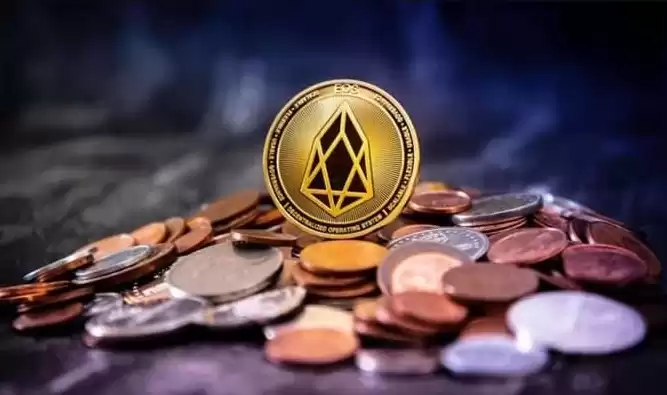-
 Bitcoin
Bitcoin $121700
1.50% -
 Ethereum
Ethereum $4724
2.29% -
 XRP
XRP $3.230
-1.48% -
 Tether USDt
Tether USDt $1.000
0.05% -
 BNB
BNB $856.9
0.95% -
 Solana
Solana $203.2
2.41% -
 USDC
USDC $0.9998
0.02% -
 Dogecoin
Dogecoin $0.2420
-2.94% -
 Cardano
Cardano $0.9878
13.62% -
 TRON
TRON $0.3652
2.74% -
 Chainlink
Chainlink $23.35
-0.14% -
 Hyperliquid
Hyperliquid $46.38
3.82% -
 Stellar
Stellar $0.4462
-1.59% -
 Sui
Sui $3.963
0.50% -
 Bitcoin Cash
Bitcoin Cash $605.7
-0.07% -
 Hedera
Hedera $0.2686
1.64% -
 Ethena USDe
Ethena USDe $1.001
0.00% -
 Avalanche
Avalanche $25.03
0.69% -
 Litecoin
Litecoin $128.1
-2.47% -
 Toncoin
Toncoin $3.518
0.37% -
 UNUS SED LEO
UNUS SED LEO $9.264
0.22% -
 Shiba Inu
Shiba Inu $0.00001362
-2.28% -
 Uniswap
Uniswap $11.50
-2.45% -
 Polkadot
Polkadot $4.195
-0.48% -
 OKB
OKB $101.9
-9.51% -
 Bitget Token
Bitget Token $4.783
1.11% -
 Dai
Dai $0.9999
0.01% -
 Cronos
Cronos $0.1639
-2.59% -
 Pepe
Pepe $0.00001187
-3.61% -
 Aave
Aave $326.2
1.42%
What are the ways to buy EOS coins? How to buy EOS coins?
To purchase EOS coins, choose a reputable crypto exchange (e.g., OKX, Binance, Huobi), register an account, complete KYC verification, fund your account, locate the EOS trading pair (e.g., EOS/USDT), place a buy order, and execute it to receive EOS coins in your exchange wallet.
Oct 24, 2024 at 12:19 pm

How to Buy EOS Coins: A Comprehensive Guide
Step 1: Choose a Crypto Exchange
- OKX: A leading global crypto exchange that supports EOS trading pairs in multiple currencies.
- Binance: Another reputable exchange that offers EOS trading options.
- Huobi: A Chinese exchange with a significant user base and EOS trading facilities.
Step 2: Create an Account and Complete KYC
- Register for an account on your chosen exchange and complete the KYC (Know Your Customer) process to verify your identity.
- Provide necessary documents, such as an ID, proof of address, and sometimes a utility bill.
Step 3: Deposit Funds
- Transfer fiat currency (USD, EUR, etc.) into your exchange account using a bank transfer, debit/credit card, or third-party payment services like PayPal or Google Pay.
- You can also deposit existing cryptocurrencies that the exchange supports.
Step 4: Find the EOS Trading Pair
- Locate the trading pair for EOS. For example, "EOS/USDT" indicates the EOS token is being traded against the Tether (USDT) stablecoin.
Step 5: Place a Buy Order
- Decide on the amount of EOS you want to purchase and the type of order to place.
- A "market order" buys EOS at the current market price, while a "limit order" buys EOS at a specific price.
Step 6: Execute the Order
- Click the "Buy" button to execute your purchase order.
- The EOS coins will be credited to your exchange wallet.
Additional Ways to Buy EOS Coins
1. Peer-to-Peer Marketplaces:
- Websites and apps like LocalBitcoins allow individuals to buy and sell EOS directly with each other, often using alternative payment methods such as cash or gift cards.
2. Crypto ATMs:
- Some crypto ATMs offer the option to purchase EOS coins with cash, but these ATMs may have higher fees and limited availability.
3. EOS Direct Sales:
- EOS Foundation occasionally offers direct token sales for EOS, but these sales are usually limited in quantity and may not always be available.
Tips for Buying EOS Coins
- Research: Understand the purpose and potential of EOS before investing.
- Choose Reputable Exchanges: Select established exchanges with high liquidity and security measures.
- Protect Your Wallet: Store your EOS coins in a secure hardware wallet or on a reputable exchange's wallet.
- Set Limits: Determine how much you are willing to invest and set appropriate stop-loss orders to minimize potential losses.
- Be Patient: The cryptocurrency market can be volatile, so don't be surprised if there are price fluctuations.
Disclaimer:info@kdj.com
The information provided is not trading advice. kdj.com does not assume any responsibility for any investments made based on the information provided in this article. Cryptocurrencies are highly volatile and it is highly recommended that you invest with caution after thorough research!
If you believe that the content used on this website infringes your copyright, please contact us immediately (info@kdj.com) and we will delete it promptly.
- Kazakhstan's Crypto Leap: Bitcoin ETF and Central Asia's Digital Finance Future
- 2025-08-13 12:45:19
- BlockDAG Presale Blazes Past $371M: Fundraising Frenzy Fuels Crypto Sensation
- 2025-08-13 13:05:21
- Meme Coins: Chasing the 2025 Surge – Which Will Moonshot?
- 2025-08-13 10:25:23
- Bitcoin's Wild Ride: Rally, Pullback, and What's Next
- 2025-08-13 10:25:23
- Bitcoin, Bitmax, and Institutional Demand: A New Era of Crypto Investment
- 2025-08-13 10:45:12
- Solana, ROAM, and Airdrops: What's the Buzz in 2025?
- 2025-08-13 11:35:13
Related knowledge

What is Ethereum’s Slashing mechanism and how to punish malicious behavior?
Feb 20,2025 at 03:08am
Key PointsOverview of slashingDifferent types of slashing in EthereumIncentives and consequences of slashingIdentifying and reporting slashed validato...

What is the verifier node of Ethereum and how to become a verifier?
Feb 19,2025 at 06:00pm
The Verifier Node of Ethereum: A Comprehensive GuideKey Points:What is a Verifier Node?How to Become a Verifier NodeResponsibilities and Rewards of a ...

What is Ethereum’s staking, and how to participate and earn money?
Feb 19,2025 at 04:37pm
Key Points:Understanding Ethereum's Staking MechanismSteps to Participate in StakingBenefits and Rewards of StakingSecurity and Risk ConsiderationsTec...

What is Ethereum’s DAO (Decentralized Autonomous Organization) and how does it work?
Feb 20,2025 at 03:12am
Key PointsDefinition and Structure of a DAOGovernance and Decision-Making in DAOsBenefits and Use Cases of DAOsChallenges and Limitations of DAOsWhat ...

What is Ethereum's multi-signature wallet and how to improve security?
Feb 20,2025 at 02:18pm
Key Points:Understanding the Concept of a Multi-Signature WalletBenefits and Drawbacks of Multisig WalletsRequirements for Setting Up a Multisig Walle...

What is Ethereum's oracle and how to provide data for smart contracts?
Feb 21,2025 at 01:30am
Key Points:Understanding the concept of oracles in EthereumExploring different types of oraclesDetailed guide on how to provide data for smart contrac...

What is Ethereum’s Slashing mechanism and how to punish malicious behavior?
Feb 20,2025 at 03:08am
Key PointsOverview of slashingDifferent types of slashing in EthereumIncentives and consequences of slashingIdentifying and reporting slashed validato...

What is the verifier node of Ethereum and how to become a verifier?
Feb 19,2025 at 06:00pm
The Verifier Node of Ethereum: A Comprehensive GuideKey Points:What is a Verifier Node?How to Become a Verifier NodeResponsibilities and Rewards of a ...

What is Ethereum’s staking, and how to participate and earn money?
Feb 19,2025 at 04:37pm
Key Points:Understanding Ethereum's Staking MechanismSteps to Participate in StakingBenefits and Rewards of StakingSecurity and Risk ConsiderationsTec...

What is Ethereum’s DAO (Decentralized Autonomous Organization) and how does it work?
Feb 20,2025 at 03:12am
Key PointsDefinition and Structure of a DAOGovernance and Decision-Making in DAOsBenefits and Use Cases of DAOsChallenges and Limitations of DAOsWhat ...

What is Ethereum's multi-signature wallet and how to improve security?
Feb 20,2025 at 02:18pm
Key Points:Understanding the Concept of a Multi-Signature WalletBenefits and Drawbacks of Multisig WalletsRequirements for Setting Up a Multisig Walle...

What is Ethereum's oracle and how to provide data for smart contracts?
Feb 21,2025 at 01:30am
Key Points:Understanding the concept of oracles in EthereumExploring different types of oraclesDetailed guide on how to provide data for smart contrac...
See all articles

























































































